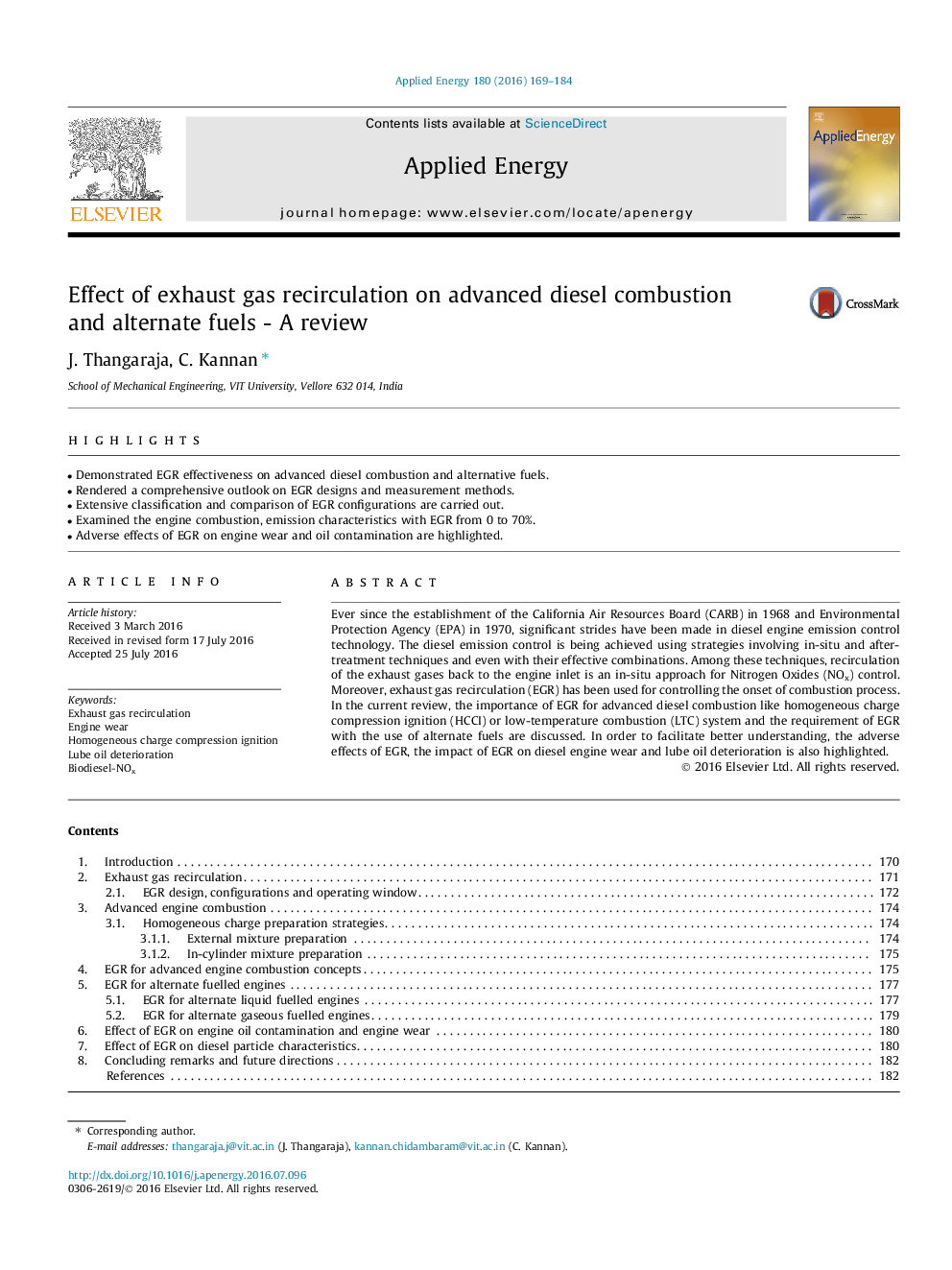| Article ID | Journal | Published Year | Pages | File Type |
|---|---|---|---|---|
| 242447 | Applied Energy | 2016 | 16 Pages |
•Demonstrated EGR effectiveness on advanced diesel combustion and alternative fuels.•Rendered a comprehensive outlook on EGR designs and measurement methods.•Extensive classification and comparison of EGR configurations are carried out.•Examined the engine combustion, emission characteristics with EGR from 0 to 70%.•Adverse effects of EGR on engine wear and oil contamination are highlighted.
Ever since the establishment of the California Air Resources Board (CARB) in 1968 and Environmental Protection Agency (EPA) in 1970, significant strides have been made in diesel engine emission control technology. The diesel emission control is being achieved using strategies involving in-situ and after-treatment techniques and even with their effective combinations. Among these techniques, recirculation of the exhaust gases back to the engine inlet is an in-situ approach for Nitrogen Oxides (NOx) control. Moreover, exhaust gas recirculation (EGR) has been used for controlling the onset of combustion process. In the current review, the importance of EGR for advanced diesel combustion like homogeneous charge compression ignition (HCCI) or low-temperature combustion (LTC) system and the requirement of EGR with the use of alternate fuels are discussed. In order to facilitate better understanding, the adverse effects of EGR, the impact of EGR on diesel engine wear and lube oil deterioration is also highlighted.
